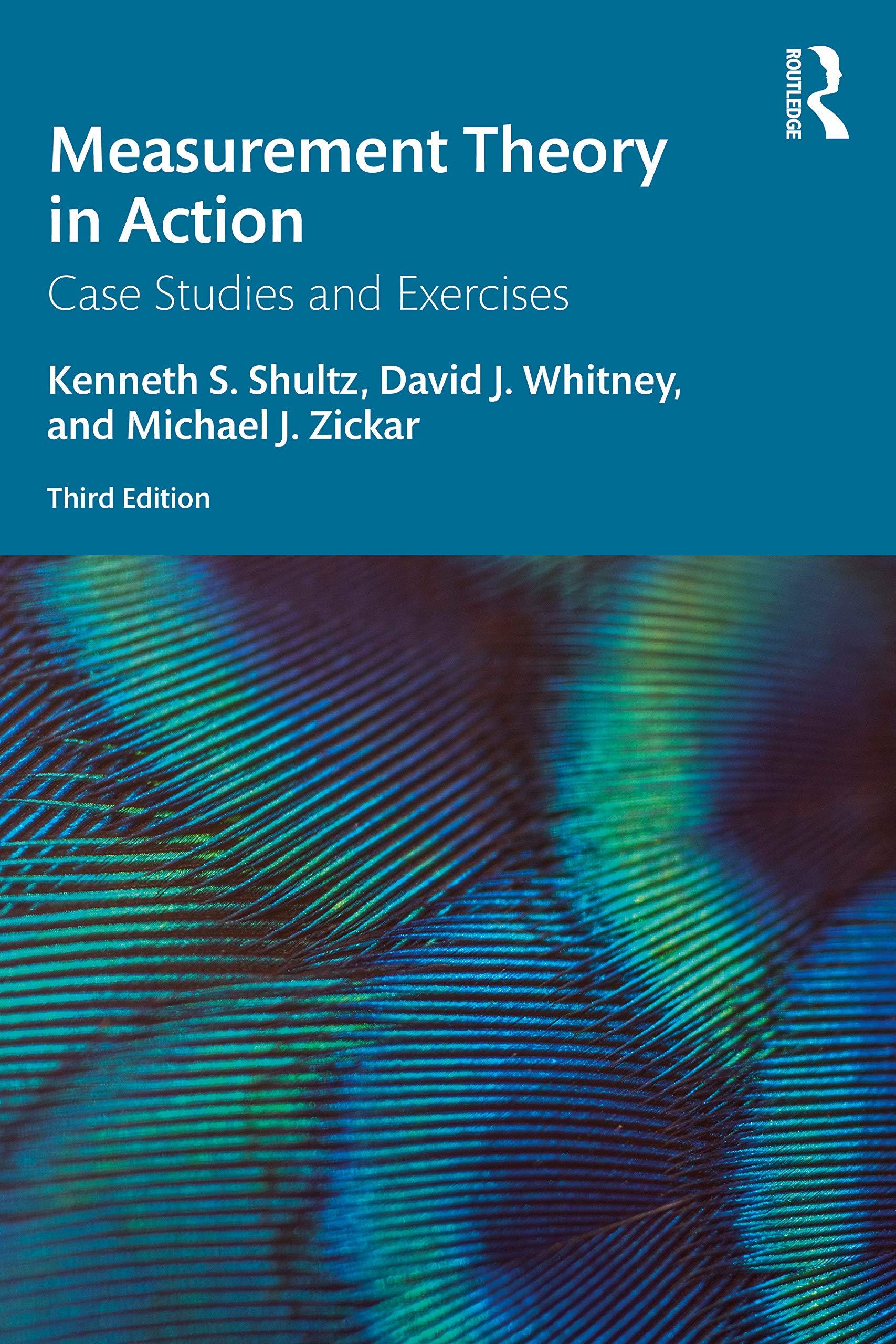Andra was on a roll, or at least she had been until she looked at the results
Question:
Andra was on a roll, or at least she had been until she looked at the results of her exploratory factor analysis (EFA). At the request of the chair of the psychology department, she had been working the past few weeks on the development of a scale to assess the citizenship behaviors of graduate students. Andra based her scale on the concept of Organizational Citizenship Behavior (OCB), but she had quickly realized that the university context would require specific items that related more to grad students. She expected her Graduate Student Citizenship Behavior (GSCB) scale to have four dimensions:
• helping behavior—one’s tendency to help other students in school related tasks
• conscientiousness—following college, department, and program rules and regulations; maintaining visibility around the department; and so forth
• professionalism—avoiding complaining and gossiping about professors, students, and workload
• civic virtue—involvement in program-related activities, including serving on committees, presenting at departmental colloquia, and so on She followed a rigorous process of writing items intended to assess each of these dimensions and had then asked some of the psychology department faculty to look over the items. Based on this input, she had incorporated some revisions and thrown out some items altogether. In the end, her GSCB scale was composed of 43 draft items (with at least 10 items per hypothesized dimension). After obtaining approval from the university’s human subjects review board, Andra had administered the draft items to 119 undergraduate students recruited through the psychology department’s subject pool. Students received extra credit in their psychology class for voluntarily participating. Once she had completed data collection, she had excitedly entered the data into an SPSS file. After checking the accuracy of her input, Andra moved on to the exploratory factor analysis. Not exactly familiar with all the possible options, Andra clicked away at a few of the options that sounded somewhat familiar. She ended up choosing to run principal components analysis with Varimax rotation of factors. Unfortunately, the output was not very encouraging. According to the Kaiser criterion, she had seven factors. Seven. “I thought four dimensions of my scale would be complex enough, but seven,” sighed Andra. She knew it was time to talk to her advisor about what to do next.
Questions
1. The tryout sample is a crucial element in the test development process. Discuss the appropriateness of the following characteristics of Andra’s sample for the development of this scale.
a. Undergraduate students recruited through the psychology subject pool
b. Sample size 2. Given the difficulty of obtaining a sizeable sample of graduate students, how could Andra obtain an appropriate sample?
3. Andra made a number of decisions in conducting the factor analysis. For each of the following decisions, discuss whether Andra’s choice was the most appropriate option.
a. Choosing exploratory procedures over confirmatory factor analysis
b. Choosing principal components analysis over EFA
c. Choosing Varimax rotation of factors
d. Determining the number of factors based on the Kaiser criterion alone 4. If, following some modification of the analysis, Andra continued to find little support for her expected four factors, how would you suggest that she proceed?
Step by Step Answer:

Measurement Theory In Action
ISBN: 9780367192181
3rd Edition
Authors: Kenneth S Shultz, David Whitney, Michael J Zickar





